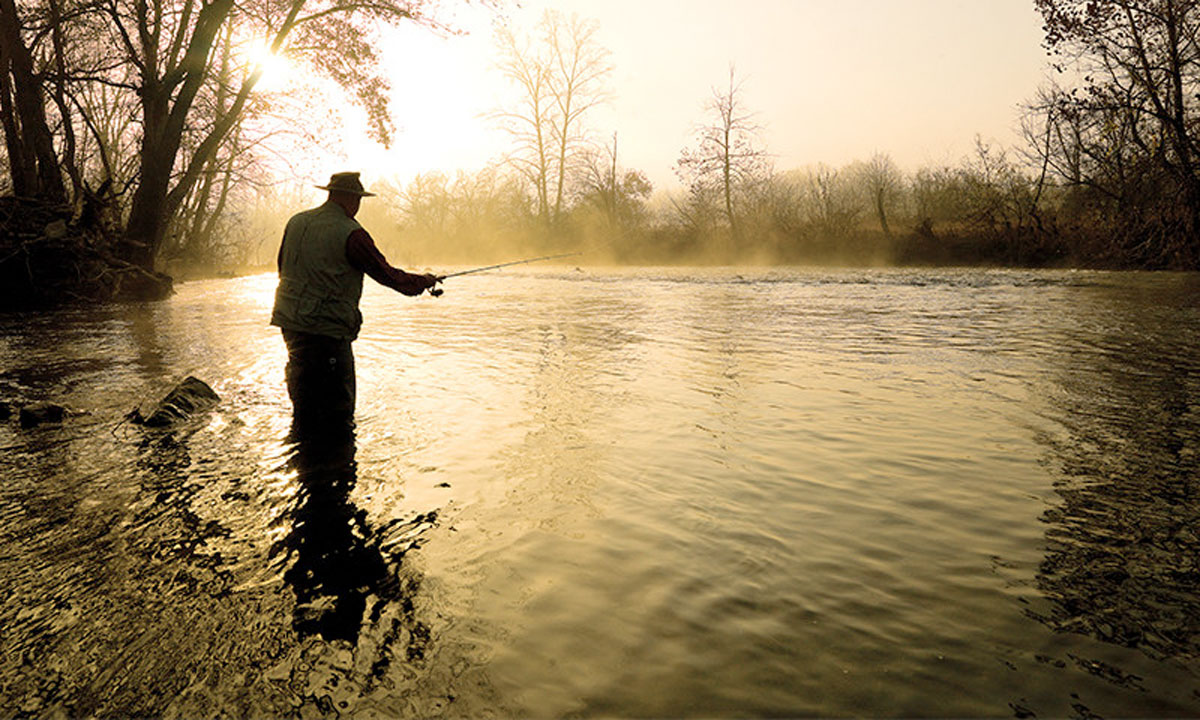During the past week, we have had two rain events (for a total of half an inch here in Cotter), warm temperatures and at times moderate winds. The lake level at Bull Shoals fell five tenths of a foot to land at twenty five and six tenths feet above seasonal power pool of 661.27 feet. This is eight and one tenth feet below the top of flood pool. Upstream, Table Rock fell one and three tenths feet to rest at two and six tenths feet above seasonal power pool and eleven and four tenths feet below the top of flood pool. Beaver Lake fell three tenths of a foot to rest at five and nine tenths feet above seasonal power pool and two and seven tenths feet below the top of flood pool. On the White, we had no wadable water. Norfork Lake fell one and one tenth feet to rest at fifteen and two tenths feet above seasonal power pool of 556 feet and eight and eight tenths feet below the top of flood pool. On the Norfork, we have had wadable water at night.
Seasonal power pool has been reset for the lakes in the White River system. The lakes are all much higher due to recent rains. We can expect high levels of generation in the near future.
With the higher flows, the fishing has slowed. The top spot has been Bull Shoals State Park. The hot flies were olive woolly buggers (#8, #10), Y2Ks (#14, #12), prince nymphs (#14), zebra midges (black with silver wire and silver bead or red with silver wire and silver bead #16, #18), pheasant tails (#14), ruby midges (#18), root beer midges (#18), pink and cerise San Juan worms (#10), and sowbugs (#16). Double fly nymph rigs have been very effective (my current favorite combination is a pheasant tail nymph with a ruby midge dropper).
The Buffalo National River and Crooked Creek are navigable. With the warm temperatures the bite is better. My favorite fly is a Clouser minnow. Carefully check the water level before entering Crooked Creek or the Buffalo River. There are no dams on these streams. They both have large drainages and are prone to flooding during and following any rain event. The water can rise very quickly.
The Norfork is fishing moderately. Navigate this stream with caution as things have changed a bit during the recent flooding. There has been major gravel recruitment at the bottom of Mill Pond and the dock hole. The most productive flies have been small midge patterns (#18, #20, #22) like ruby midges, root beer midges, zebra midges (black or red with silver wire and silver bead) and soft hackles (#14, #16) like the green butt. Egg patterns have also been productive. Double fly nymph rigs have been very effective. My current favorite combination is a pheasant tail nymph with a ruby midge dropper.
Dry Run Creek is fishing moderately. There is increased pressure with warmer weather. Fish early or late to avoid the crowds (the creek is open to fishing from sunrise to sundown). The Norfork National Fish Hatchery is open but the restrooms are still closed. The hot flies have been sowbugs (#14), Y2Ks (#12), various colored San Juan worms (worm brown, red, hot fluorescent pink and cerise #10), mop flies and egg patterns.
The Spring River is fishing better. This is a great place to fish, when they are running water on the White and Norfork Rivers. The canoe season is upon us. Look out for the aluminum hatch! Be sure to wear cleated boots and carry a wading staff. There is a lot of bedrock that can get very slick. The hot flies have been olive woolly buggers with a bit of flash (#10), cerise and hot pink San Juan worms (#10) and Y2Ks (#10).
Remember that the White and Norfork Rivers and Dry Run Creek are infected with didymo, an invasive alga. Be sure and thoroughly clean and dry your waders (especially the felt soles on wading boots) before using them in any other water.
John Berry is a fly fishing guide in Cotter, Arkansas and has fished these local streams for over thirty five years.



